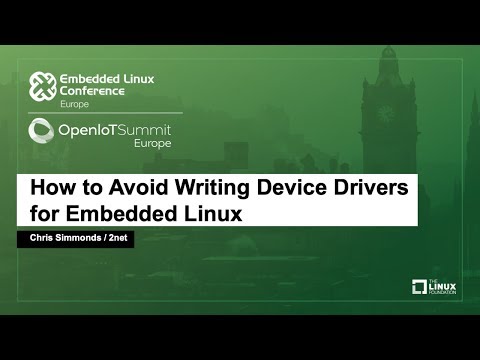Description:
Discover how to avoid writing device drivers for embedded Linux in this informative conference talk by Chris Simmonds. Learn about ready-made drivers for common interfaces and explore practical examples using GPIO, PWM, and I2C subsystems. Gain insights into writing user-space code to control hardware from application environments using C or C++. Watch live demonstrations of each category and benefit from Simmonds' extensive experience in designing and building open-source embedded systems. Explore topics such as the conventional device driver model, application interactions with device drivers, device trees, userspace drivers, and specific interfaces like gpiolib, gpio-cdev, and i2c-dev. Understand how to export and manipulate GPIO pins, work with PWM for LED brightness control, and communicate with I2C devices like light sensors.

How to Avoid Writing Device Drivers for Embedded Linux
Add to list
#Conference Talks
#Programming
#Programming Languages
#C Programming
#Engineering
#Electrical Engineering
#Embedded Systems
#Embedded Linux
#Computer Science
#Operating Systems
#Device Drivers